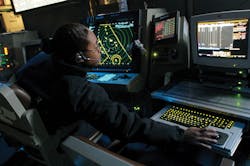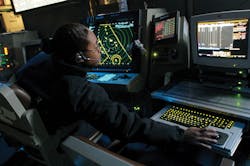Passive surveillance to track aircraft using only the RF signals they emit
WRIGHT-PATTERSON AFB, Ohio - U.S. Air Force researchers are ready to ask industry for passive surveillance techniques to identify, pinpoint, and track aircraft, land vehicles, and surface ships using only the RF signals they emit.
Officials of the U.S. Air Force Research Laboratory (AFRL) at Wright-Patterson Air Force Base, Ohio, issued a presolicitation (FA8650-17-S-1022) for the future Radio Identification (RID) program. This initiative seeks to demonstrate and evaluate the benefits of identifying and geo-locating surface and air platforms via reception, processing, and display of their communications, navigation, and identification signals, as well as of other signals of interest.
The RID program will focus on non-cooperative target identification and geo-location via passive reception of RF signals of interest. The project will mature technologies and develop techniques for detection, identification, and reporting of any spoofing attempts, and demonstrate passive reception of at least one cooperative identification system. The automatic dependent surveillance-Broadcast (ADS-B) emitting signals at 1090 MHz is the planned capability.
Air Force researchers are looking for modular RID software architectures based on open-systems standards where practical to support upgrades to algorithms and incorporating additional signals of interest.
The system architecture must be able to support agile multifunction signal processing and fusion of sensor tracks. Researchers are interested in system architectures that could work on a variety of platforms and locations, and that could move to Air Force or U.S. military systems using multi-channel, multifunction apertures and receivers integrated with software-defined architectures and equipment.
A formal solicitation for the RID program is expected by late May or early June 2017. The program should run for five years, and could be worth as much as $24.92 million to the contractor or contractors ultimately chosen to carry it out.
This is a presolicitation only, and Air Force researchers are not ready to accept proposals until the formal solicitation comes out in May or June.
For technical questions or concerns contact the Air Force's John Bollinger by e-mail at [email protected]. For contracting questions contact Cindy Brocker by e-mail at [email protected].
More information is online at www.fbo.gov/spg/USAF/AFMC/AFRLWRS/FA8650-17-S-1022/listing.html.

